|
|
General: CLAVE 911/DECODIFICADO EL SANTO GRIAL PARA GLORIA DE YHWH, CRISTO Y MAGDALENA
Escolher outro painel de mensagens |
|
|
 Serendipity, how about the last supper ?
_________________
E.T.A.E
EL 11 DE SEPTIEMBRE ES EL AÑO NUEVO COPTO Y EL 11 DE MARZO ES LA MITAD DE AÑO- JUAN MARCOS ES PATRONO DE LA IGLESIA COPTA
|
|
|
|
|
|
|
|
Jain's Realisation on Bruce Cathie - Giseh Pyramid Angle - the Speed Of Light and the Number 72
In the case of Cathie’s discoveries, we find that the lines of magnetic force that made up the Global Grid are always 30 arc-minutes apart, which being half of 60 means half a degree of arc-minutes. So, from Cathie’s discoveries, I know that every half-degree of arc on the Earth’s surface was a potential UFO trackline, for a total of 720 latitude lines and 720 longitude lines.
Bruce Cathie found that by using units of 30 minutes of arc latitude north-south, and 30 minutes of arc longitude east-west, on his Mercator’s map, a grid pattern was formed into which a great number of UFO reports could be fitted.
So I looked at the same Mercato map and visualized the 720 x 720 little squares. Recognizing that 72 is an anointed Number, being the base angle of the Golden Isosceles Triangle as seen in the Pentagram and having many other references.
Let's calculate what 72x72 is, it is 5,184
which as you know is the Giseh Pyramid Angle of 51.84 in Harmonic Maths.
The very interesting connection to this 51.84 degree pyramid angle is seen when it is converted to minutes and seconds of arc: 51.84 x 60 x 60 = 186,624 seconds = Speed Of Light in miles per seconds (mps), an astounding result: the Giseh Pyramid Angle, the base of Kepler's Triangle, has a direct and precise correspondence to the Speed Of Light. Surely this is a form of God Mathematics!
Jain
ps: To convert miles/second to kilometres/second, just think of the Fibonacci Sequence eg: 55mph = 89 km/hr, where 55 and 89 are successive Fib Nos. Their Ratio is approximately 1:1.618, so to convert 186,624 mph into km/hr multiply that number by 1.618… and you get an approximation to 299,792 km/hr for the Speed Of Light. This makes the important connection to the Imperial (Base 12) and Modern Metric (Base 10) systems of measurement to be related by the ubiquitous Golden Ratio.
https://ne-np.facebook.com/jain108academy/videos/jains-realisation-giseh-pyramid-angle-the-speed-of-light-bruce-cathie/974004909692334/
| | |
|
|

The diameter of the moon is 2159 miles (2160)
The diameter of the sun is 864,575.9 miles (2160 x 400 = 864,000)
Numbers of seconds in one day is 86400 (2160 X 40)
The speed of light is 186282 miles per second (216 x 864 = 186624)
Space 360 x Time 60 = 2160
Bear in mind that we do not know the exact speed of light in a vacuum and the sun is a burning ball of gas, so you can allow for a slight discrepancy in measurements.
Effectively, the diameter of the moon multiplied by the diameter of the sun equals the speed of light in miles.
How daft and stubborn would you have to be to think that those figures are all simply a coincidence?
https://www.facebook.com/FibonacciSequence60/photos/the-diameter-of-the-moon-is-2159-miles-2160the-diameter-of-the-sun-is-8645759-mi/705123093030790/ | | | | | |
|
|
|
|
|


27 8' 23.71" S 109 22' 6.31" W
(ir a Google Maps)

La Isla de Pascua (Rapa Nui o Isla Grande, en el idioma rapanui) es una es una situada en la Polinesia, al sur del Océano Pacífico, que pertenece a Chile y está a 3.600 km. de su costa. Tiene una superficie de 163,6 km² y una población de 3.791 habitantes.
El nombre de Isla de Pascua le viene porque fue descubierta el día de Pascua de Resurrección, y es conocida mundialmente por las estatuas o Moais. En la foto de la isla se indica la situación de dos de los alineamientos de moais, y a continuación la ampliación de uno de ellos.

Es una isla volcánica, siendo sus tres volcanes mas grandes El Ranu Raraku, el Rano Kau y el Maunga Terevaka.

Volcán Rano Kau.-

Volcán Rano Raraku.-



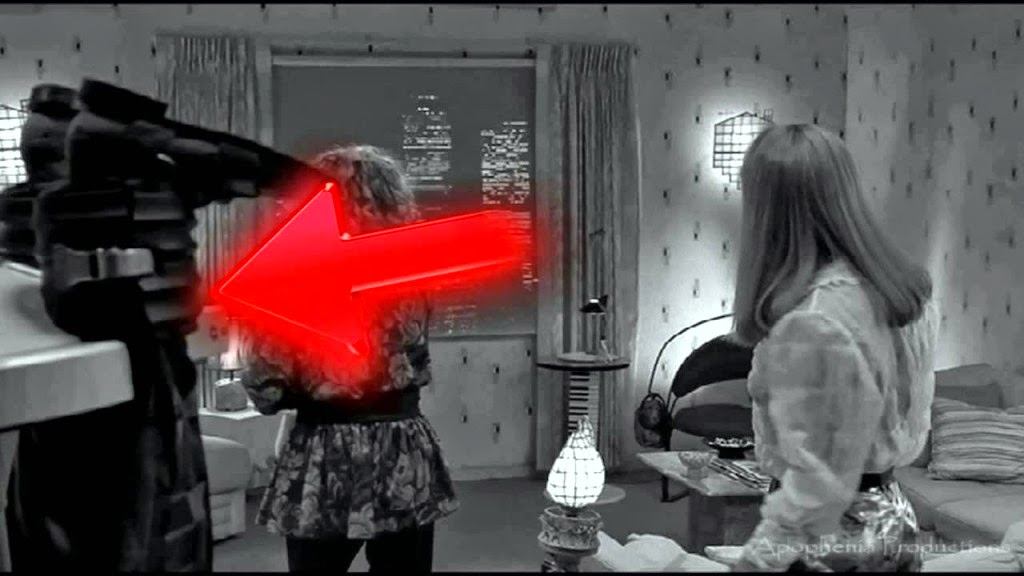
| 21. Apocalipsis 1:19 ESCRIBE las cosas que has visto, y las que son, y las que han de ser después de estas. |
|
|
|
|
|
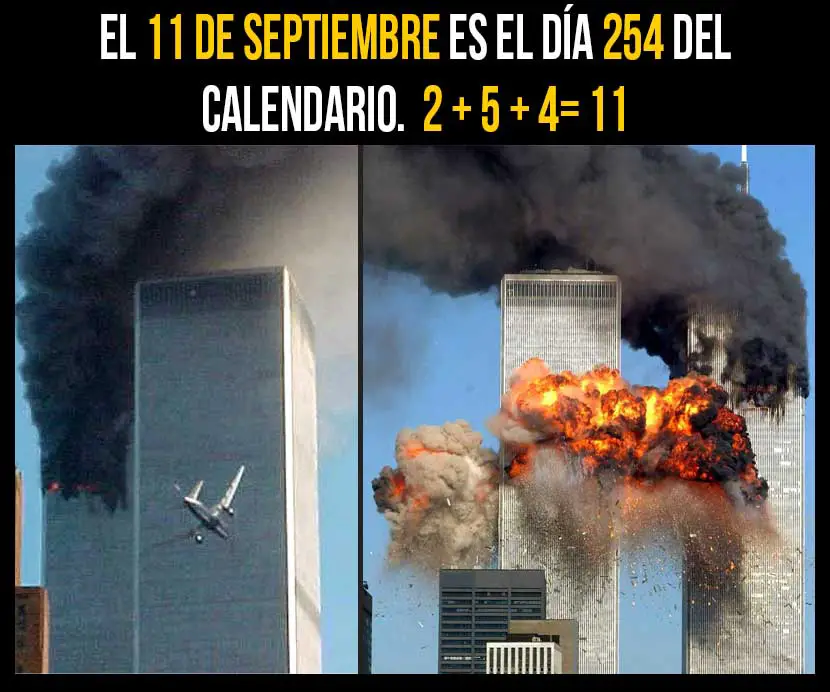
| The amount of days in a solar year plus the proportions for the Equatorial circumference of the Earth and the proportions of the Great Pyramid of Giza according to Golden Pi = 4/√φ = 3.144605511029693144: The Great Pyramid of Giza is a geodetic model of Planet Earth. The measurements mentioned below are the ideal measurements. A meter is equal to 100 centimeters 1 Solon cubit = 40 times √φ = 50.88078598056276 centimeters. If 1 Solon cubit is divided into 20 equal units of measure then 20 inches can be derived because 1 Solon cubit is equal to 20 inches. 1 Saylen cubit = 50 times √φ = 63.60098247570345 centimeters. If 1 Saylen cubit is divided into 25 equal units of measure then 25 inches can be derived because 1 Saylen cubit is equal to 25 inches. 1 inch = 2 times √φ = 2.544039299028138 centimeters. 1 foot = 12 inches. 1 foot = 24 times √φ = 30.528471588337656 centimeters. If the shortest edge length of a Kepler right triangle is equal to 1 then the hypotenuse of the Kepelr right triangle is equal to The Golden ratio = (√(5) plus 1)/2 = φ = 1.618033988749895 according to the Pythagorean theorem. The Golden ratio in Trigonometry = (cosine (36 degrees) times 2) = 1.618033988749895. If the shortest edge length of a Kepler right triangle is equal to 1 then second longest edge length of the Kepelr right triangle is the square root of the Golden ratio = √φ = 1.272019649514069 according to the Pythagorean theorem. The width for the square base of the Great Pyramid of Giza is equal to 756 feet. • If the shortest edge length of a Kepler right triangle is equal to 1 foot and then the second edge length of the Kepler right triangle is multiplied 378 equal times the result will be the height of the Great Pyramid of Giza = 378 times √φ = 480.823427516318082 feet according to Golden Pi = 4/√φ = 3.144605511029693144. • If the shortest edge length of a Kepler right triangle is equal to 1 foot and then the hypotenuse of the Kepler right triangle is multiplied 378 equal times the result will be the slant height of the Great Pyramid of Giza = 378 times φ = 611.61684774746031 feet according to Golden Pi = 4/√φ = 3.144605511029693144. • If the shorter edge length of a Golden ratio = (√(5) plus 1)/2 = φ = 1.618033988749895 rectangle is equal to 1 foot and then the diagonal of the Golden ratio = (√(5) plus 1)/2 = φ = 1.618033988749895 rectangle is multiplied 378 equal times the result will be the edge height of the Great Pyramid of Giza = 378 times = Cosine (18) degrees times 2 = 1.902113032590307 = 718.998726319136046 feet according to Golden Pi = 4/√φ = 3.144605511029693144.Cosine (18) degrees times 2 = 1.902113032590307. Cosine (18) degrees times 2 = 1.902113032590307 squared = φ plus 2 = 3.618033988749895. • If the shortest edge length of a Kepler right triangle is equal to 1 foot = 24 times √φ = 30.528471588337656 centimeters then the second longest edge length of that Kepler right triangle is equal to 38.832815729997479 centimeters.24 times √φ = 30.528471588337656 centimeters times the square root of the Golden ratio = √φ = 1.272019649514069 = 38.832815729997479 centimeters. 1 foot = 24 times √φ = 30.528471588337656 centimeters times the square root of the Golden ratio = √φ = 1.272019649514069 = 38.832815729997479 centimeters times 378 = the height of the Great Pyramid of Giza of Giza = 14678.804345939047062 centimeters. The height of the Great Pyramid of Giza = 14678.804345939047062 centimeters divided by 24 times √φ = 30.528471588337656 centimeters = the height of the Great Pyramid of Giza = 480.823427516318088 feet. 378 times √φ = 1.272019649514069 = 480.823427516318088. • If the shortest edge length of a Kepler right triangle is equal to 1 foot = 24 times √φ = 30.528471588337656 centimeters then the hypotenuse of that Kepler right triangle is equal to 49.39610465451582 centimeters. 24 times √φ = 30.528471588337656 centimeters times the Golden ratio = (√(5) plus 1)/2 = φ = 1.618033988749895 = 49.39610465451582 centimeters. 1 foot = 24 times √φ = 30.528471588337656 centimeters times the Golden ratio = (√(5) plus 1)/2 = φ = 1.618033988749895 378 = 49.39610465451582 centimeters times 378 = slant the height of the Great Pyramid of Giza = 18671.727559406979971centimeters. The Slant height of the Great Pyramid = 18671.727559406979971 centimeters divided by 24 times √φ = 30.528471588337656 centimeters = the slant height of the Great Pyramid of Giza = 611.61684774746031 feet. 378 times √φ = 1.272019649514069 = 611.61684774746031. • If the shortest edge length of a Golden ratio = (√(5) plus 1)/2 = φ = 1.618033988749895 rectangle is equal to 1 foot = 24 times √φ = 30.528471588337656 centimeters then the length of the diagonal of that Golden ratio = (√(5) plus 1)/2 = φ = 1.618033988749895 rectangle is equal to 58.068603673239965 centimeters. 24 times √φ = 30.528471588337656 centimeters times Cosine (18) degrees times 2 = 1.902113032590307 = 58.068603673239965 centimeters. Cosine (18) degrees times 2 = 1.902113032590307 squared = φ plus 2 = 3.618033988749895. 1 foot = 24 times √φ = 30.528471588337656 centimeters times = Cosine (18) degrees times 2 = 1.902113032590307 = 58.068603673239965 centimeters times 378 = the edge height of the Great Pyramid of Giza of Giza = 21949.932188484706835 centimeters. The edge height of the Great Pyramid = 21949.932188484706835 centimeters divided by 24 times √φ = 30.528471588337656 centimeters = the edge height of the Great Pyramid of Giza = 718.998726319136046 feet. 378 times Cosine (18) degrees times 2 = 1.902113032590307 = 718.998726319136046. Cosine (18) degrees times 2 = 1.902113032590307. Cosine (18) degrees times 2 = 1.902113032590307 squared = φ plus 2 = 3.618033988749895. A Kepler right triangle can be created from the construction of a Golden ratio = (√(5) plus 1)/2 = φ = 1.618033988749895 rectangle by using Compass and straight edge and obviously a marker for the drawing surface. The amount of days in a Solar year = 4/√φ times 7920 times 5280/(10 ^ 3 times 360) = 365.277376161209156. The amount of days in a Solar year = 4/√φ = 3.144605511029693144 times 7920 times 5280/(10 ^ 3 times 360) = 365.277376161209156. The equatorial circumference of planet Earth = 10 ^ 3 times 360 times 365.277376161209156 = 131499855.41803529616 feet. The equatorial circumference of planet Earth = 4/√φ = 3.144605511029693144 times 7920 = 24905.275647355169727 statute miles. 131499855.41803529616 feet divided by 86400 = half the perimeter of the socle of the Great Pyramid of Giza = 1521.989067338371483 feet. Half the perimeter of the socle of the Great Pyramid of Giza times 86400 is also equal to the equatorial circumference of planet Earth = 131499855.41803529616 feet. 484 divided by √φ times 2 = the width of the socle of the Great Pyramid of Giza = 760.99453366918572 feet. Half the width of the socle of the Great Pyramid of Giza = 380.49726683459286 feet times √φ = 484 feet. 484/√φ times 2 times 2 times 86400 = 131499855.41803529616 feet. 131499855.41803529616 feet divided by 5280 = The perimeter of the socle of the Great Pyramid of Giza = 484/√φ times 8 = 3043.978134676742966 feet. 484 feet /√φ times 8 = 3043.978134676742966 feet times 12 = 24905.275647355169727 statute miles. 24905.275647355169727 statute miles divided by 7920 statute miles = Golden Pi = 4/√φ = 3.144605511029693144. There are 929.28 meters in the square perimeter of the socle of the Great Pyramid of Giza according to Golden Pi = 4/√φ = 3.144605511029693144. 484/√φ times 8 = 3043.978134676742966 times 12 = 36527.737616120915592 divided by 100 = the exact amount of days in a solar year = 365.277376161209156. The equatorial diameter of our planet Earth = 41817600 feet. 41817600 feet divided 86400 = the height of the Great Pyramid of Giza = 378 times √φ = 480.823427516318082 feet plus the height of the socle of the Great Pyramid of Giza = 3.176572483681918 feet. 10 ^ 3 times 360 times 484/(√φ) times 8 times 12/(100) = 131499855.41803529616 feet. The height of the Great Pyramid if Giza is 378 times √φ = 480.823427516318082 feet. The width of the square base of the Great Pyramid of Giza is 756 feet. The perimeter of the square base of the Great Pyramid of Giza = 3024 feet. 9 factorial = 362880. At 10 degrees latitude the length of a degree is 9 factorial =362880 feet. The amount of inches in the perimeter of the square of the Great Pyramid of Giza = 36288. 36288 times 10 = 362880. The width for the square base of the Great Pyramid of Giza = 756 feet. The perimeter of the square base of the Great Pyramid of Giza = 3024 feet. There are 36288 inches in the perimeter of the square base of the Great Pyramid of Giza. 3024 times 12 = 36288. 756 times 4 times 12 = 36288. (9!)/10 = 36288. The equatorial circumference of planet Earth: https://joedubs.com/four-earthly-elements/equatorial-circumference-of-earth/ Kepler right triangle diagram with squares upon the edges of the Kepler right triangle: https://drive.google.com/file/d/1iBtXYy06yv9UWtGP5mwMXyt80vaysFvR/view?usp=sharing Kepler right triangle construction method: https://drive.google.com/file/d/15DNXB_xNP2f2jCroC0FyNUyBYGhVAA2J/view?usp=sharing PYTHAGOREAN THEOREM: https://en.wikipedia.org/wiki/Pythagorean_theorem Golden ratio: https://en.wikipedia.org/wiki/Golden_ratio The history of the meter: The history of the meter: https://www.factinate.com/editorial/meter-history/ The meter: https://en.wikipedia.org/wiki/Metre The meter is based now on the speed of light: https://www.youtube.com/watch?v=vgqUyFaUDcI |
|
|
|
|
|
|
|
patagonia=911=volver al futuro
|
|
|
|
|

 Es un tópico común la interpretación moralista y sui géneris que se hace el nombre dado por Cristo a los hermanos Santiago y Juan, los dos hijos de Zebedeo, como Marcos nos refiere en su Evangelio (Mc. 3:17) al hablar de los doce apóstoles elegidos por Cristo: “… a Jacobo hijo de Zebedeo, ya Juan hermano de Jacobo, a quienes dio el sobrenombre de Boanerges, es decir, Hijos del trueno «. Es un tópico común la interpretación moralista y sui géneris que se hace el nombre dado por Cristo a los hermanos Santiago y Juan, los dos hijos de Zebedeo, como Marcos nos refiere en su Evangelio (Mc. 3:17) al hablar de los doce apóstoles elegidos por Cristo: “… a Jacobo hijo de Zebedeo, ya Juan hermano de Jacobo, a quienes dio el sobrenombre de Boanerges, es decir, Hijos del trueno «.
Aunque de etimología discutida, parece que Boanerges es un nombre arameo procedente de la transliteración de los términos “ benê ” y “ regês ”, cuya traducción es, efectivamente, hijos del trueno, y donde trueno se viene a interpretar como estruendo e ira, en alusión a un supuesto temperamento fogoso y enérgico, con una disposición a la acción impetuosa y agresión que se etiquetan como “ira” y “ambición”, aspectos temperamentales que no encajan en unos jóvenes y modestos pescadores del mar de Galilea. En otros casos se alude a su afán en la difusión por el mundo de la buena nueva evangélica, en modo que se propone que el nombre hace alusión al futuro ardor como predicadores.
Y para ilustrar demostrativamente la interpretación propuesta, se recurre a pasajes de las escrituras supuestamente clarificadoras.
 En Lucas 9: 51-56 se cuenta que, cerca ya su partida de este mundo, Jesús decide ir a Jerusalén, pasando por una aldea samaritana en la que, al mandar emisarios para su alojamiento, son rechazados. “ Viendo esto sus discípulos Jacobo y Juan, dijeron: «Señor, ¿quieres que mandemos que descienda fuego del cielo, como hizo Elías, y los consuma ”. Jesús les reprende, les explica su destino y se van a otra aldea. En Lucas 9: 51-56 se cuenta que, cerca ya su partida de este mundo, Jesús decide ir a Jerusalén, pasando por una aldea samaritana en la que, al mandar emisarios para su alojamiento, son rechazados. “ Viendo esto sus discípulos Jacobo y Juan, dijeron: «Señor, ¿quieres que mandemos que descienda fuego del cielo, como hizo Elías, y los consuma ”. Jesús les reprende, les explica su destino y se van a otra aldea.
En otro pasaje evangélico (Mt.20:20-28) los hermanos envían a su madre que pida al maestro les reserve un lugar privilegiado para ellos, al parecer traduciendo una ambición desmedida en sus aspiraciones personales.
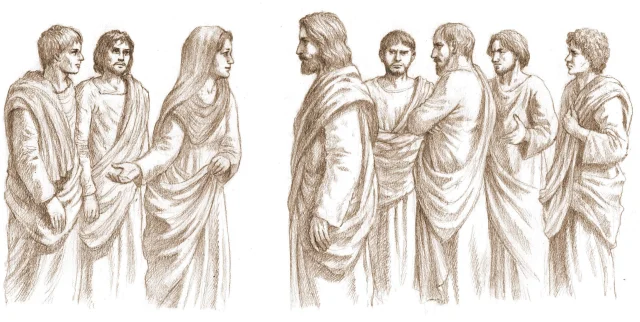
Ambos pasajes son ya próximos a la entrada en Jerusalén y la Pasión de Cristo, es decir, cronológicamente postreros en la sucesión de relatos evangélicos, y más que aspectos temperamentales de los apóstoles, expresan cuestiones doctrinales sobre la misión de Cristo en este mundo, con mensajes de enseñanza en uno y otro caso, como que él no ha venido a ser servido, sino a servir y dar su vida. Parece pueril pensar que los Zebedeo ofrecieran una propuesta realmente destructiva en términos irascibles o que ambicionaran un poder que desconocían y para el que no estaban preparados.
 Santiago y Juan eran personas humildes, no creo que ocasionalmente irascibles ni ambiciosos, y no se puede deducir en estos pasajes ni en otros de las escrituras cual era el carácter temperamental que se les adjudica de un modo interpretativo bastante aleccionador y moralista, que además no encaja con un rasgo evidente de Juan, como la dulzura e ingenio del “discípulo amado” de Cristo acorde con una edad muy joven, diría incluso que adolescente, que justifica un trato más especial con el Maestro, ni con la más que segura humildad y carácter silencioso de Santiago que parece pasar de puntillas por las escrituras a pesar de que gusta pintar su temperamento enérgico totalmente inventado. Santiago y Juan eran personas humildes, no creo que ocasionalmente irascibles ni ambiciosos, y no se puede deducir en estos pasajes ni en otros de las escrituras cual era el carácter temperamental que se les adjudica de un modo interpretativo bastante aleccionador y moralista, que además no encaja con un rasgo evidente de Juan, como la dulzura e ingenio del “discípulo amado” de Cristo acorde con una edad muy joven, diría incluso que adolescente, que justifica un trato más especial con el Maestro, ni con la más que segura humildad y carácter silencioso de Santiago que parece pasar de puntillas por las escrituras a pesar de que gusta pintar su temperamento enérgico totalmente inventado.
Siempre me han parecido muy pocos objetivos y demasiado moralizantes y aleccionadoras estas interpretaciones que nacen de explicaciones con formato de sermón o lección; disertaciones en que se busca un sentido muy dirigido a modo de moraleja o enseñanza. No doy mucho valor a estas interpretaciones, y no creo que los pasajes reflés permitan alusiones al temperamentos de los Zebedeo, no solo porque apenas hay en las escrituras datos que permitan hacer muchas precisiones de aspectos caracterológicos y temperamentales, sino porque además no creo que el nombre Boanerges buscará identificar a los dos hermanos por un rasgo temperamental común de ambos y pienso que las explicaciones dadas no son convincentes ni objetivas.
El nombre de Boanerges es concedido a los Zebedeo en época temprana, en todo caso muy anterior a los pasajes referidos, lo que invita a pensar que el nombre no está relacionado con supuestos aspectos temperamentales comunes a ambos hermanos, sino con algo más bien próximo en el tiempo vivido por ambos. Es bien sabido que los hermanos Zebedeo fueron de los primeros apóstoles llamados por Cristo, y por diferentes referencias de las escrituras (Mt 27:56 y Jn 19:25) se deduce que eran parientes cercanos de Jesús por vía materna, seguramente primos.
 No hace mucho tiempo que han decidido dejarlo todo e irse es pos de su carismático primo, y han tenido que mostrar su decisión a un padre contrariado que tenía otros planes para sus hijos. Más que relacionado con el temperamento intuyo que el término es debido a una razón doméstica más y cercana, como un guiño familiar a una situación que frecuentemente tendrá su vis cómica y su faceta engorrosa, pero en todo caso genera un trance tenso y relevante. Me refiero a la reacción de enojo paterno, pues el apodo de Boanerges lo concede simultáneamente a los dos hermanos que, seguramente con colaboración materna, como ocurrió en otros pasajes, abandonó a su padre en la tarea de las redes, lo que también hicieron Pedro y Andrés, jornaleros en la hacienda de Zebedeo, Pedro en grado de capataz. No hace mucho tiempo que han decidido dejarlo todo e irse es pos de su carismático primo, y han tenido que mostrar su decisión a un padre contrariado que tenía otros planes para sus hijos. Más que relacionado con el temperamento intuyo que el término es debido a una razón doméstica más y cercana, como un guiño familiar a una situación que frecuentemente tendrá su vis cómica y su faceta engorrosa, pero en todo caso genera un trance tenso y relevante. Me refiero a la reacción de enojo paterno, pues el apodo de Boanerges lo concede simultáneamente a los dos hermanos que, seguramente con colaboración materna, como ocurrió en otros pasajes, abandonó a su padre en la tarea de las redes, lo que también hicieron Pedro y Andrés, jornaleros en la hacienda de Zebedeo, Pedro en grado de capataz.
 La reacción de enojo es mas que comprensible al perder de golpe su personal más fiel y cercano, incluido su mujer Salomé, que también fue del grupo de mujeres que seguían a Jesucristo. De modo que ahí tenemos a Zabedeo abandonado de su gente con su próspero negocio que había creado para ellos y que ellos abandonaban en bloque. No parece que Zebedeo fuera el santo Job de modo que no resulta difícil imaginar al viejo Zebedeo en clara actitud de enojo practicando algun gesto apotropaico incontenible dirigido al cielo y mandando a su parentela a algun lugar poco recomendable. La reacción de enojo es mas que comprensible al perder de golpe su personal más fiel y cercano, incluido su mujer Salomé, que también fue del grupo de mujeres que seguían a Jesucristo. De modo que ahí tenemos a Zabedeo abandonado de su gente con su próspero negocio que había creado para ellos y que ellos abandonaban en bloque. No parece que Zebedeo fuera el santo Job de modo que no resulta difícil imaginar al viejo Zebedeo en clara actitud de enojo practicando algun gesto apotropaico incontenible dirigido al cielo y mandando a su parentela a algun lugar poco recomendable. Y seguramente después bajando los brazos subiendo los hombros y asumiendo los singulares valores de su extraordinario sobrino a cuya mirada se apagó todo su enojo, tras escuchar atónito su sermón desde su propia barca y protagonizar una pesca inexplicable. Y seguramente después bajando los brazos subiendo los hombros y asumiendo los singulares valores de su extraordinario sobrino a cuya mirada se apagó todo su enojo, tras escuchar atónito su sermón desde su propia barca y protagonizar una pesca inexplicable.
 Benei Regesh, en griego Boanergês, se ha convertido como «hijos de cólera», «hijos del estruendo» o «hijos de ira». Jesús dio este nombre a los hijos de Zebedeo, pero no por el temperamento de los hermanos, sino de su progenitor que, antes de rendirse a la evidencia, juró en arameo. Benei Regesh, en griego Boanergês, se ha convertido como «hijos de cólera», «hijos del estruendo» o «hijos de ira». Jesús dio este nombre a los hijos de Zebedeo, pero no por el temperamento de los hermanos, sino de su progenitor que, antes de rendirse a la evidencia, juró en arameo.




  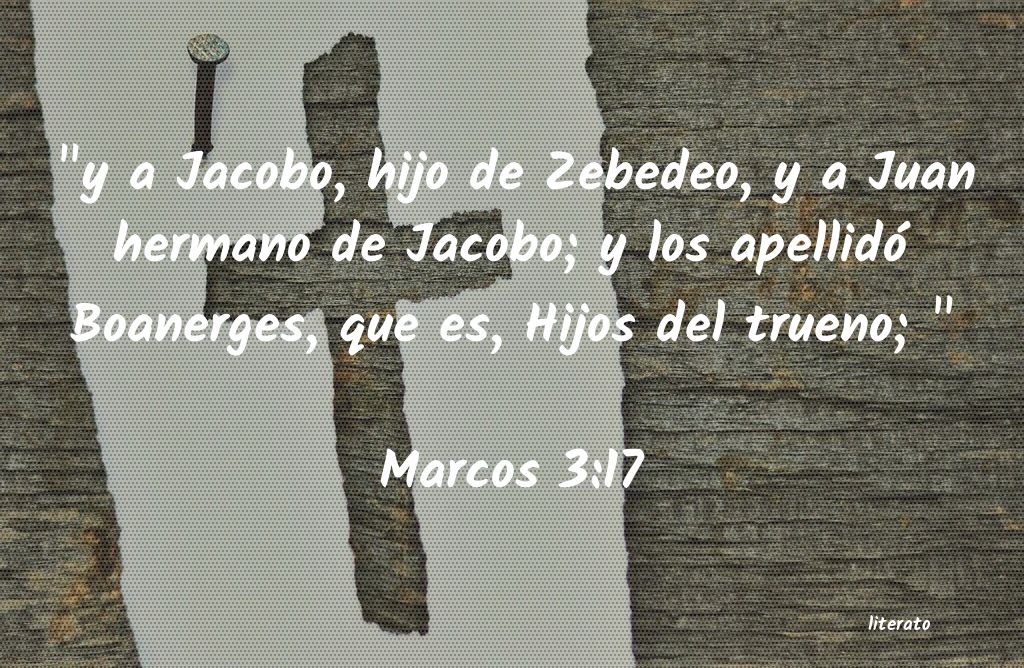 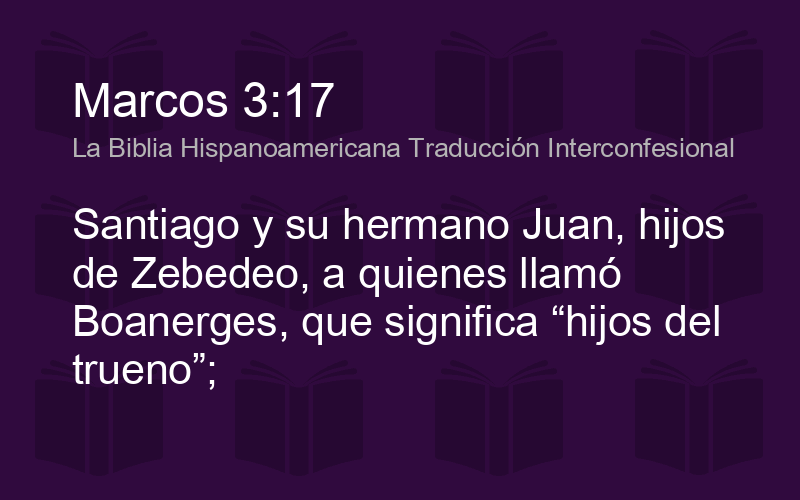 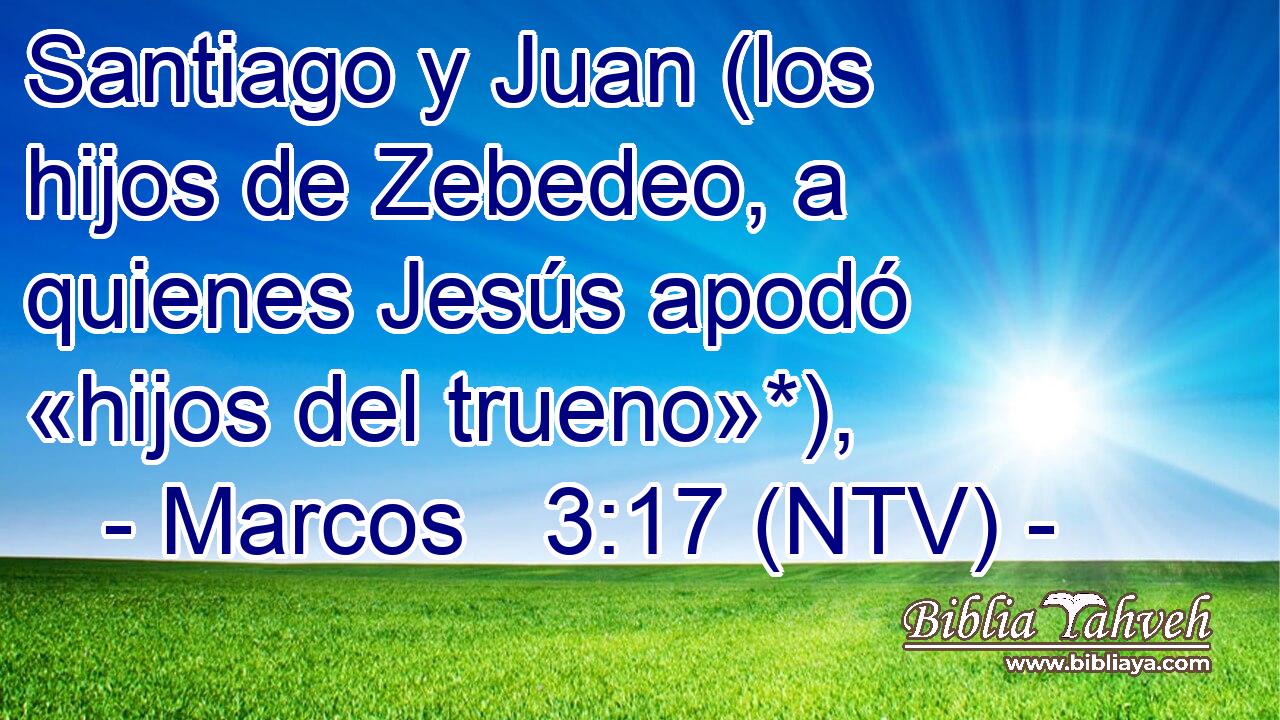

|
|
|
|
|
France had a calendar with 10-hour days during the revolution.
French Revolutionary Time was a short-lived concept that used a base-10 timekeeping system. Otherwise known as “decimal time,” this unprecedented method included 10-hour days, 100 minutes per hour, and 100 seconds per minute. Each day was divided into 10 equal parts, with “zero” marking the start (what is now midnight) and “five” denoting the midpoint (noon). This meant that every hour was more than twice as long as an hour of standard time. New clocks and watches were even manufactured displaying both decimal time and standard time, to considerable confusion.
While France formally adopted this practice on November 24, 1793, the idea was first promoted in 1754. That year, mathematician Jean le Rond d’Alembert drew inspiration from the base-10 numeral system that had existed since ancient times and argued that it would be easier and more convenient to calculate times that were divisible by 10. The concept was revived in 1788 and met with enthusiasm from French revolutionaries seeking to shed their ties to the past. French Revolutionary Time was later adopted by the French Parliament, though it proved to be unpopular among citizens who found the switch confusing. The new system was deemed optional on April 7, 1795, and the country ultimately reverted to the previous timekeeping method.
In addition to changing how the country kept time, revolutionary France also adopted the French Republican calendar. The new formula divided the year into 12 months, each of which contained three 10-day weeks. To bring the total days up to 365, France tacked on five additional days at the end of the year as holidays. Debuted on October 24, 1793, the new calendar was also short-lived, and was abolished by Napoleon Bonaparte on January 1, 1806.
You may also like
By the Numbers
DID YOU KNOW?
September 1752 was only 19 days long in Britain.
In 1752, the month of September was only 19 days long throughout the British Empire (including its colonies in America), due to the Calendar (New Style) Act of 1750. That parliamentary move transferred the British from the Julian calendar to the Gregorian calendar, the former having overestimated each year's length by about 11 minutes. Back in 1582, Pope Gregory XIII had declared that all countries under the dominion of the Catholic Church needed to adopt the Gregorian calendar, but many Protestant nations — including England — resisted those demands. When Britain finally converted to the Gregorian calendar in 1752 in an effort to catch up with other nations, the country jumped straight from September 2 to September 14, skipping the 11 days in between to account for the errors of the old calendar.
https://historyfacts.com/world-history/fact/france-had-a-calendar-with-10-hour-days-during-the-revolution/ |
|
|
 Primeira Primeira
 Anterior
236 a 250 de 250
Seguinte Anterior
236 a 250 de 250
Seguinte
 Última
Última

|
|
| |
|
|
©2025 - Gabitos - Todos os direitos reservados | |
|
|

